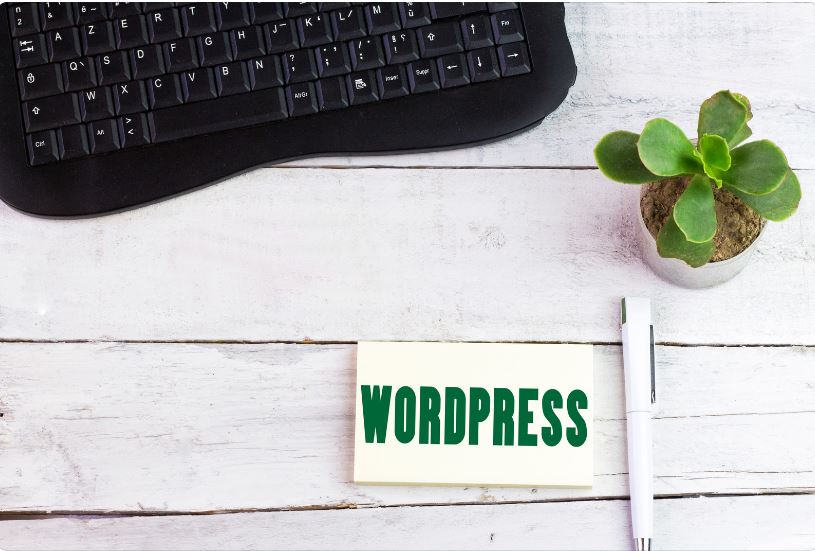Last Updated on
A Beginner’s Introduction to WordPress Website
Embracing today’s digital realm entails owning a vibrant online space – a website. Among the myriad of platforms available, WordPress Website stands out as an unparalleled choice for novices, especially those keen on a hassle-free start. What is WordPress? Simply put, it’s a free, open-source platform that empowers you to create, manage, and customize your website without deep programming knowledge.

Why WordPress? An In-depth Look at Its Advantages
Embracing WordPress doesn’t just align with the trend; it’s a tactical choice steeped in benefits. It boasts an easy-to-use interface, making it the go-to option for beginners. Its extensive array of themes provides an aesthetic playground to create a website unique to your brand. At the same time, the plethora of plugins brings functionality to your fingertips, enabling your website to evolve as your needs change.
Step 1: Finding the Perfect Hosting Provider
To kickstart your WordPress journey, you need a hosting provider – an online home for your website. Choose a provider with an excellent uptime score, top-notch customer service, and enough bandwidth to handle your site’s traffic. Providers such as Bluehost, SiteGround, and DreamHost offer one-click WordPress installations, simplifying the process.
Step 2: Unraveling the Art of Domain Selection
Your domain name is your online address and identity. Picking an intuitive, easy-to-remember name that aligns with your brand and mission is crucial. Domain names can be acquired from your hosting provider or separate registrars like Namecheap or Mad-ez Domains.
Step 3: Unveiling the Magic of WordPress Installation
Once your hosting and domain are ready, installing WordPress is time. If your host offers a one-click WordPress installation, the process becomes painless. If not, you can manually install WordPress by downloading the software from wordpress.org and following the installation instructions.
Step 4: Navigating the WordPress Dashboard
The WordPress dashboard is your command center. Here, you can create and manage posts, pages, and comments; customize your site’s appearance; add plugins; manage users; and adjust settings. Spend time familiarizing yourself with the dashboard to harness the full potential of WordPress.
Step 5: Exploring the Universe of WordPress Themes
WordPress themes dictate the look and feel of your website. The repository on wordpress.org offers thousands of free articles, while premium articles can be purchased from marketplaces like ThemeForest or Elegant Themes. Experiment with different themes to find one that resonates with your brand’s personality.
Step 6: Supercharging Your Website with WordPress Plugins
Plugins are the magic wands of WordPress that extend your site’s functionality. Want to add a contact form, improve SEO, or create a photo gallery? There’s a plugin for that! However, remember to install plugins only from trusted sources to avoid security risks.
Step 7: Crafting Content and Pages That Resonate
Your website is a canvas to share your story. Craft compelling content that speaks to your audience. Use WordPress’s built-in tools like the block editor to format your text, add media, and create engaging layouts.
Step 8: Customizing Your WordPress Settings
The Settings menu allows you to fine-tune your WordPress site. Here, you can set your site’s title and tagline, decide how your URLs appear, manage comments, select your website’s language, and more. Take the time to tweak these settings to optimize your site’s performance and visibility.
Step 9: Mastering WordPress SEO
Effective SEO boosts your website’s visibility. WordPress offers a multitude of SEO plugins like Yoast SEO and All in One SEO that guides you to optimize your content, improve your metadata, and generate sitemaps, ensuring search engines and visitors love your site equally.
Step 10: Keeping Your WordPress Site Secure
Security is paramount in the digital world. Regularly updating WordPress core, themes, and plugins; choosing solid passwords; and installing security plugins like Wordfence or Sucuri will safeguard your website from threats.
Wrapping Up: The Continual Journey of WordPress Mastery
Creating your first WordPress site is just the beginning of a thrilling digital journey. Remember, consistent improvement and optimization will help your website grow and evolve. Dive in and revel in the joy of bringing your unique WordPress website to life.
FAQs
Is a WordPress website free?
WordPress itself is free and open-source software. It is a content management system (CMS) that allows you to create and manage websites easily. You can download and use WordPress software without paying anything, and there are no licensing fees or subscription costs for using the core WordPress software.
However, while the WordPress software is free, there are other costs associated with creating and running a WordPress website:
- Hosting: You will need a web hosting service to store your website’s files and make them accessible online. Hosting costs can vary depending on the provider and your chosen hosting plan.
- Domain name: To have a custom web address (e.g., www.yourwebsite.com), you’ll need to register a domain name, which usually involves an annual fee.
- Themes: While free articles are available, you might want a premium theme for more features and customization options. Premium themes usually have a one-time cost.
- Plugins: Plugins add extra functionality to your WordPress website. Many plugins are free, but some advanced or specialized ones may come with a price.
- Website Development: If you don’t have the technical skills to build your website, you might hire a web developer, which can be an additional expense.
So, while WordPress itself is free, the overall cost of running a WordPress website will depend on your specific needs and preferences. It can range from minimal expenses to a significant investment, depending on the features and level of customization you require.
What does it cost to have a WordPress website?
The cost of having a WordPress website can vary depending on your specific requirements and preferences. Here are some everyday expenses to consider:
- Hosting: Hosting is a fundamental requirement to have your WordPress website accessible online. Prices for hosting can range from a few dollars per month for shared hosting to more expensive options like dedicated or managed WordPress hosting. On average, you can expect to spend anywhere from $3 to $25 per month for hosting, depending on your hosting provider and plan.
- Domain Name: A domain name is your website’s online address (e.g., www.yourwebsite.com). Domain name costs can vary, but typically you can purchase one for around $10 to $20 per year.
- Themes: WordPress offers free articles that you can use to customize the look and layout of your website. However, if you want a more unique or feature-rich theme, premium articles can cost anywhere from $30 to $100 or more, depending on the complexity and developer reputation.
- Plugins: Plugins extend the functionality of your WordPress website. Many essential plugins are free, but some specialized or advanced plugins may have costs ranging from $10 to $100 or more.
- Website Development: If you’re unfamiliar with building websites or want a more complex website, you may need to hire a web developer. The cost of hiring a developer can vary significantly based on their experience, location, and the scope of your project. Simple websites might cost a few hundred dollars, while more intricate or custom-designed sites can cost several thousand dollars or more.
- Maintenance and Updates: Regular maintenance and updates are essential for the security and performance of your WordPress website. Some hosting providers offer managed services that handle updates for you, while others may require you to take them yourself or hire someone. Maintenance costs can be around $10 to $50 monthly or more, depending on the support needed.
It’s important to note that these costs are approximate and can vary based on various factors. You can start with minimal expenses and gradually invest more as your website grows and requires additional features or resources.




